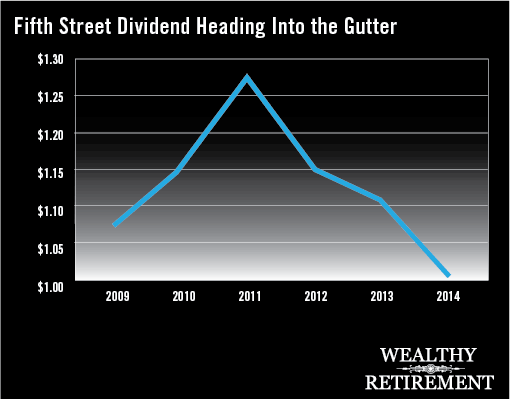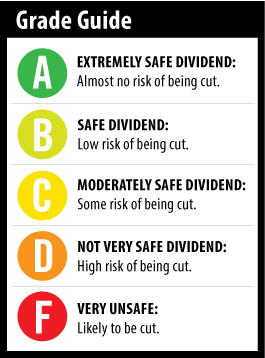 Outside of the investing world, I’m a boxing ring announcer. So, when I think of Fifth Street, the first thing that comes to mind is Miami’s famous Fifth Street Gym, where a young Muhammad Ali (as well as many others) used to train.
Outside of the investing world, I’m a boxing ring announcer. So, when I think of Fifth Street, the first thing that comes to mind is Miami’s famous Fifth Street Gym, where a young Muhammad Ali (as well as many others) used to train.
The hours that Ali spent in the gym jumping rope, hitting the heavy bag and sparring paid huge dividends throughout his legendary career.
But when investors think of Fifth Street, it’s not some steamy gym that comes to mind, but Fifth Street Finance Corp. (Nasdaq: FSC), which also pays huge dividends – a 10.4% yield, in fact.
[ad#Google Adsense 336×280-IA]Fifth Street Finance is a business development company (BDC) with five offices around the U.S. (none of them located on a street called Fifth, incidentally).
BDCs invest in other businesses and pay their shareholders a large dividend from the investment income.
Fifth Street has $2.7 billion invested in 124 companies.
A full 95% of those investments are in companies’ debts.
In other words, it either lends money to a company or buys its existing debt.
The average investment is $25 million. Roughly 83% of the debt is senior secured loans, or loans secured by collateral should the borrowing company fail to repay its debt. It’s one of the safest ways BDCs can lend money.
The company recently reported strong financial results, with net investment income up 26% over last year.
Besides the fat yield that Fifth Street pays, income investors no doubt like the fact that the dividend is paid every month rather than quarterly. The company has said the dividend of $0.083 will be paid monthly through the end of August. The company’s fiscal year ends in September.
In the March quarter, net investment income was $0.25 per share, lining up perfectly with the amount paid in dividends. For the six months of the fiscal year so far, net investment income was $0.51, a penny higher than the $0.50 it has paid out so far.
With BDCs, we look at net investment income to study the company’s ability to pay the dividend. It is similar to a regular corporation’s cash flow. The way BDCs pay the bills, and the shareholders, is with the income they make from their investments – net investment income.
Even though net investment income is up significantly this year, so is the share count. Fifth Street Finance currently has 147 million shares outstanding versus 108 million a year ago. So the net investment income per share is actually lower than last year.
Last year at this time, net investment income per share totaled $0.58 versus the $0.51 today.
As a result, the dividend is lower today than it was in 2013, when the company paid out $0.096 monthly.
In fact, you can see the company has a history of lowering the dividend each year as net investment income per share has fallen.
 So while the company itself is actually doing quite well and is making more money, it has to split that income up among more shares. That means the dividend per share has steadily fallen over the past three years.
So while the company itself is actually doing quite well and is making more money, it has to split that income up among more shares. That means the dividend per share has steadily fallen over the past three years.
Back in December, the company filed a $1.5 billion shelf offering, giving it the right to sell stock, issue warrants or take on debt.
 The company also has a $100 million stock repurchase plan in place that expires in November, so it is difficult to guess how many shares will be outstanding in the future.
The company also has a $100 million stock repurchase plan in place that expires in November, so it is difficult to guess how many shares will be outstanding in the future.
What is important to know is that the company has shown a willingness to lower the dividend when it needs to.
Management is doing the right thing as far as not distributing more cash than it’s taking in.
But I’m sure shareholders would just like to see them run the business without further dilution.
Although management has done a good job growing the business, given its track record of dividend cuts, I think you have to assume more could be coming down the road.
Dividend Safety Rating: D
— Marc Lichtenfeld
[ad#IPM-article]
Source: Wealthy Retirement

